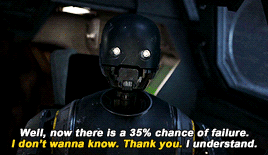
Get your FREE 30-day trial.
Please complete all fields.
The topic of artificial intelligence is everyone’s lips lately. Just Google the term and you’ll see a plethora of articles and information on the subject, generating daily — and not just from academic journals, but in mainstream media and pop culture.
We talk about artificial intelligence quite a bit on our own blog, so it’s a good idea to brush up on some of the vocabulary you’ll be hearing a lot more about as AI becomes more ubiquitous in our lives. Check out our handy glossary and then test yourself with our fun quiz. Good luck!
The simulation of human intelligence by machines. Or more simply, having machines “think like a human.”
Example sentence: C-3PO is an example of a robot powered by artificial intelligence.
The technique of making an machine, a process, or a system operate automatically.
Ex: Marketing automation allows you to take the manual labor out of lead management by putting common tasks on autopilot.
A procedure, instructions, or formula for solving a problem or completing a task.
Ex: Much to the dismay and confusion of users, Facebook’s News Feed algorithm changed again.
A collection of information in numerical form that can be digitally transmitted or processed.
Ex: When all your company’s customer data is stored in a cloud-based CRM, everyone can access it to have a single, holistic view of a customer, from marketing, to sales, to service.
There’s data, and then there’s big data: a collection of data sets so large and complex that it becomes difficult to process using most typical data management tools. But big data is the raw fuel of AI, as it provides the inputs for surfacing patterns and making predictions.
Ex: More and more of IT’s technology investments will go towards managing big data.
The process of combing through large sets of data to discover patterns and extract useful information.
Ex: When Sherlock Holmes enters his ‘mind palace’, he’s recalling all of his memories and knowledge, data mining all the information at his disposal to make deductions and solve his cases.
A core sub genre of AI by which computer programs can “learn” and automatically modify its knowledge, procedures, and processes to improve performance and efficiency. As the machine learns from past performance data, it can also begin to predict and improve future performance.
Ex: Netflix’s machine learning programming looks at what I watch, and gives me personalized recommendations of other shows I might enjoy.
A ‘deeper’ subset of machine learning that uses complex algorithms to mimic the brain’s neural network to learn, with little or no human supervision.
Ex: Google Photos uses deep learning to power face recognition in photographs.
A machine learning task that finds patterns within large data sets in order to recognize natural language. This field of study drives better human-computer interactions and aids machines in better understanding sentiment via human language.
Ex: Stronger natural language processing helps Siri and Alexa sounds less like robots and more like personal assistants.
A branch of advanced analytics that is used to make predictions about unknown future events, based on patterns in historical data.
Ex: Using predictive analytics, marketers can send more relevant emails to you based on each time you take and action (or don’t take an action) on an offer.
Predictive modeling is a process that uses data mining and probability to forecast outcomes. In predictive modeling, data is collected, a statistical model is formulated, predictions are made, and then the model is either validated or revised as additional data becomes available.
Ex: Rogue One’s K-2SO likely uses predictive modeling to helpfully keep Cassian aware of the danger they’re in.

A network of billions of digitally connected devices that collect and exchange data. These devices can also be programmed to communicate with one another to better serve users.
Ex: The emergence of IoT means that companies like Tesla can issue an “over the air” software update that doesn’t require owners to bring their cars to the dealer.
A branch of engineering that involves the conception, design, manufacture, and operation of robots.
Ex: One of the latest innovations from the robotics industry is a robot butler that follows you and carries your stuff.
A computer program that simulates human conversation or chat.
Ex: In March 2016, Microsoft introduced Tay, an AI chatbot designed to respond to Twitter users, emulate casual speech, and learn from “her” conversations. It went badly.
A test developed by Alan Turing in 1950 that tests the ability of a machine to mimic human behavior. The test involves a human evaluator who undertakes natural language conversations with another human and a machine and rates the conversations.
Ex: The Voight-Kampff test from the movie Blade Runner was inspired by the Turing Test.